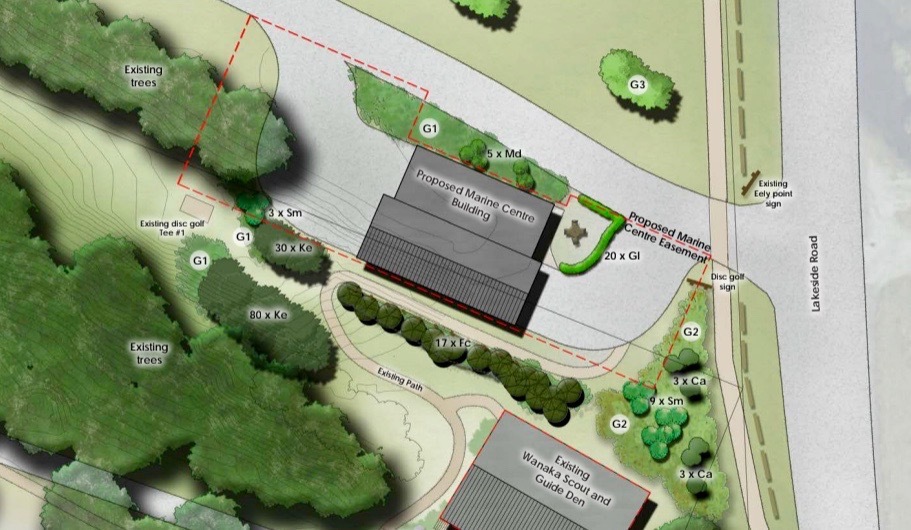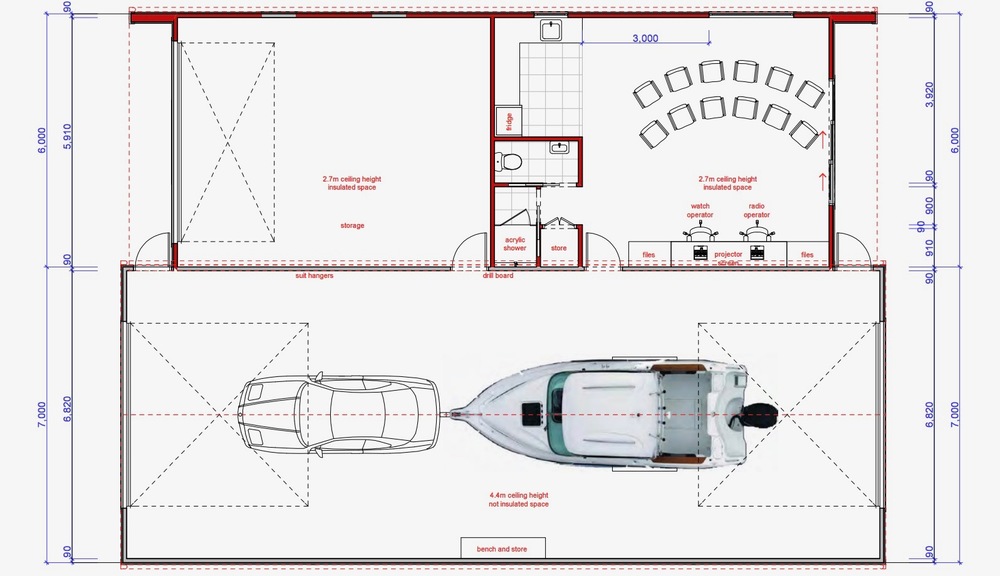Marine Rescue Centre receives popular support
Diana Cocks
12 July 2020, 6:08 PM
 Poles outline the position of the proposed Marine Rescue Centre in Eely Point Reserve. PHOTO: Wanaka App
Poles outline the position of the proposed Marine Rescue Centre in Eely Point Reserve. PHOTO: Wanaka AppWanaka’s new Marine Rescue Centre (MRC) has received overwhelming public support as Coastguard Wanaka Lakes (CWL) seeks a resource consent to build at Eely Point.
When submissions to the resource consent process closed at the end of last month, 77 submissions had been received; 75 in support and two opposed.
Those who opposed the consent made it clear that they supported the concept of the MRC but believed its scale and location was inappropriate.
CWL president Jonathan Walmisley said he was humbled by the exceptional community support. “We also appreciate the right of people to object and understand their objections and will continue to work to resolve them,” he said.
Last year, with the blessing of the Wanaka Community Board (WCB), the Queenstown Lakes District Council (QLDC) agreed to a 33-year lease of a small portion of Eely Point Reserve to CWL as the site for the proposed rescue centre.

The drawing shows the proximity of the centre to the Scout Den and road. PHOTO: Supplied
After years of deliberation and public consultation, the preferred site chosen by the WCB is nestled against the trees above the Scout Den just inside the Lakeside Drive entrance to the reserve, masking the proposed 220m2 building from the town and lake but still visible to Lakeside Drive residents opposite Eely Point reserve.
Speaking on behalf of several families with homes fronting the reserve, those opposed said the proposal meant there will be significant adverse effects on the environment, including amenity values of neighbours, public and the reserve.
They preferred the site, originally selected by the CWL, which was closer to the boat launching ramps in the trees next to the Scout Den. They said this option would be safer for reserve users and allow a more rapid response with immediate accessibility to the lake.

The purpose-built rescue centre would provide storage for the CWL’s rescue boat, a members’ training room and kitchenette, and a small storage area which could be used by the harbourmaster. PHOTO: Supplied
That original site was rejected in 2018 by both the WCB and CWL for a variety of reasons, including additional costs, increased proximity and potential conflict with other reserve users, and a more significant impact on the environment, Jonathan said.
He said the CWL had deliberately designed a recessive building, reducing its height and signage, and making it “as close to a park-like building as practical.” Also, the landscaping of natives “over time, will enhance the recreational area” and roadside amenity trees will help screen the building from the road.
The supporters of the consent were in agreement that the MRC’s proposed location and scale was functional, modest, pragmatic and essential.
They said for too long the CWL’s volunteers had been required to operate from an inadequate base (the boat is stored at Wanaka’s Showgrounds and equipment at volunteers’ homes).
“In the height of summer, traffic congestion results in significant delays launching the boat on rescue call-outs,” Johnathan said.
In his submission on behalf of Wanaka Search and Rescue chair Aaron Nicholson said: “Time is critical in most SAR operations but none more than emergencies on the water where time is the difference between life and death.”
The proposed MRC will add value to the greater SAR response capability in Wanaka and provide another meaningful community service that has a clear sense of identity and profile from a recognisable and sustainable base, Aaron said.
The Upper Clutha Environmental Society also made a submission in support despite the building being located on a recreational reserve. It said the benefits to the community outweighed any potential minor adverse effects on the landscape or amenity values.
“The visual effects are likely to be relatively minor when viewed from most locations and will not significantly adversely affect the existing amenity enjoyed by residents or visitors,” it submitted.






